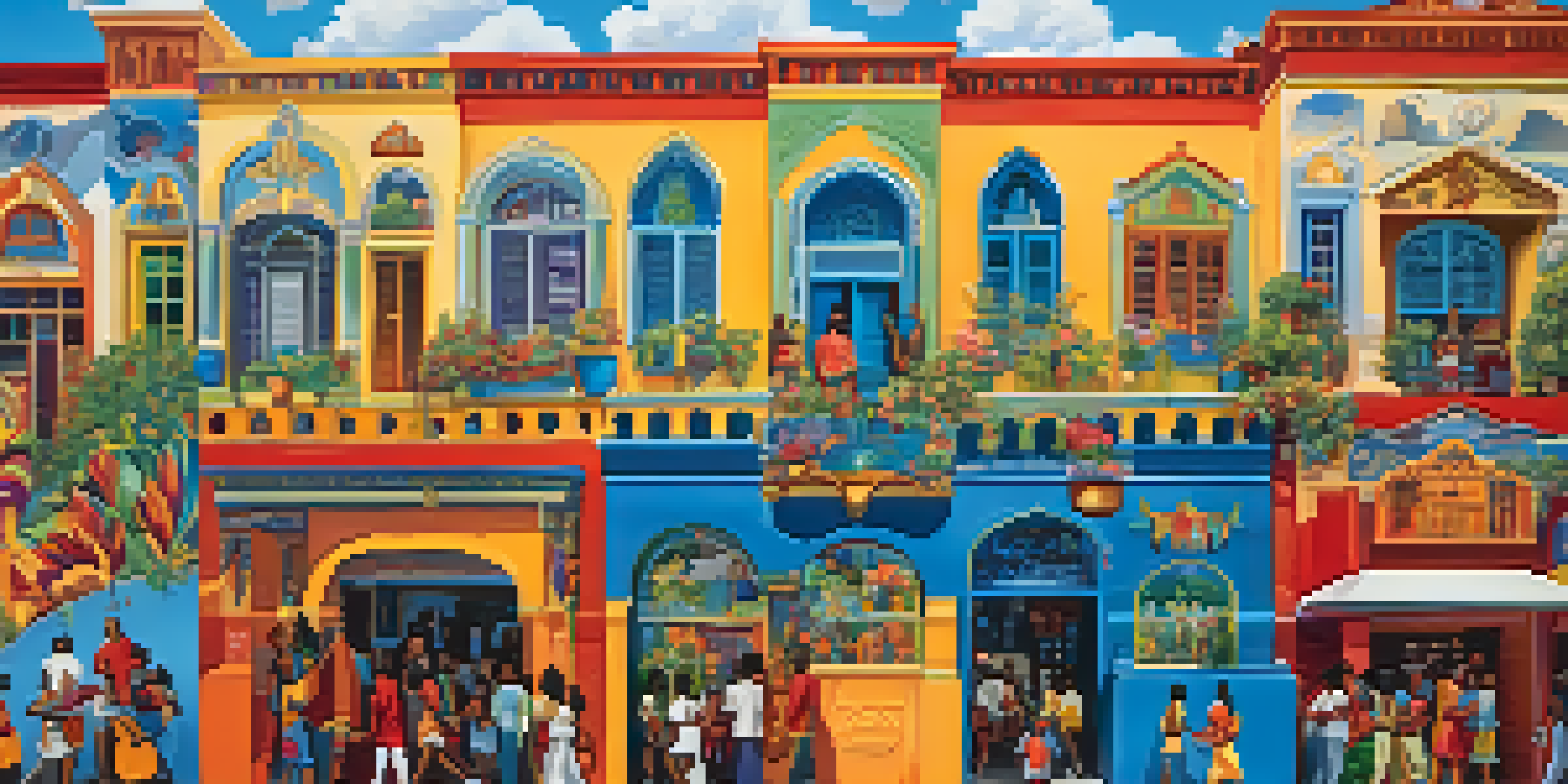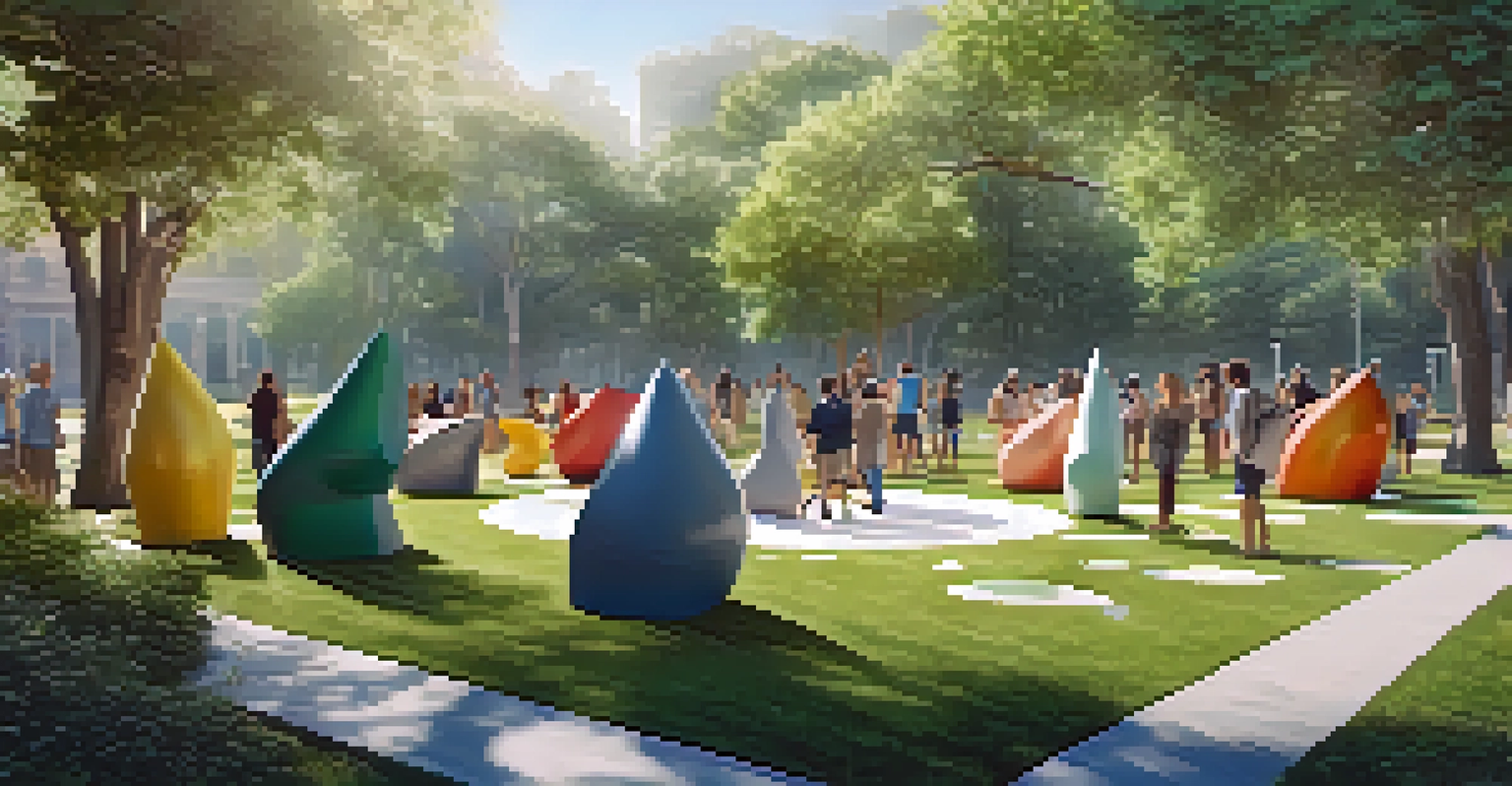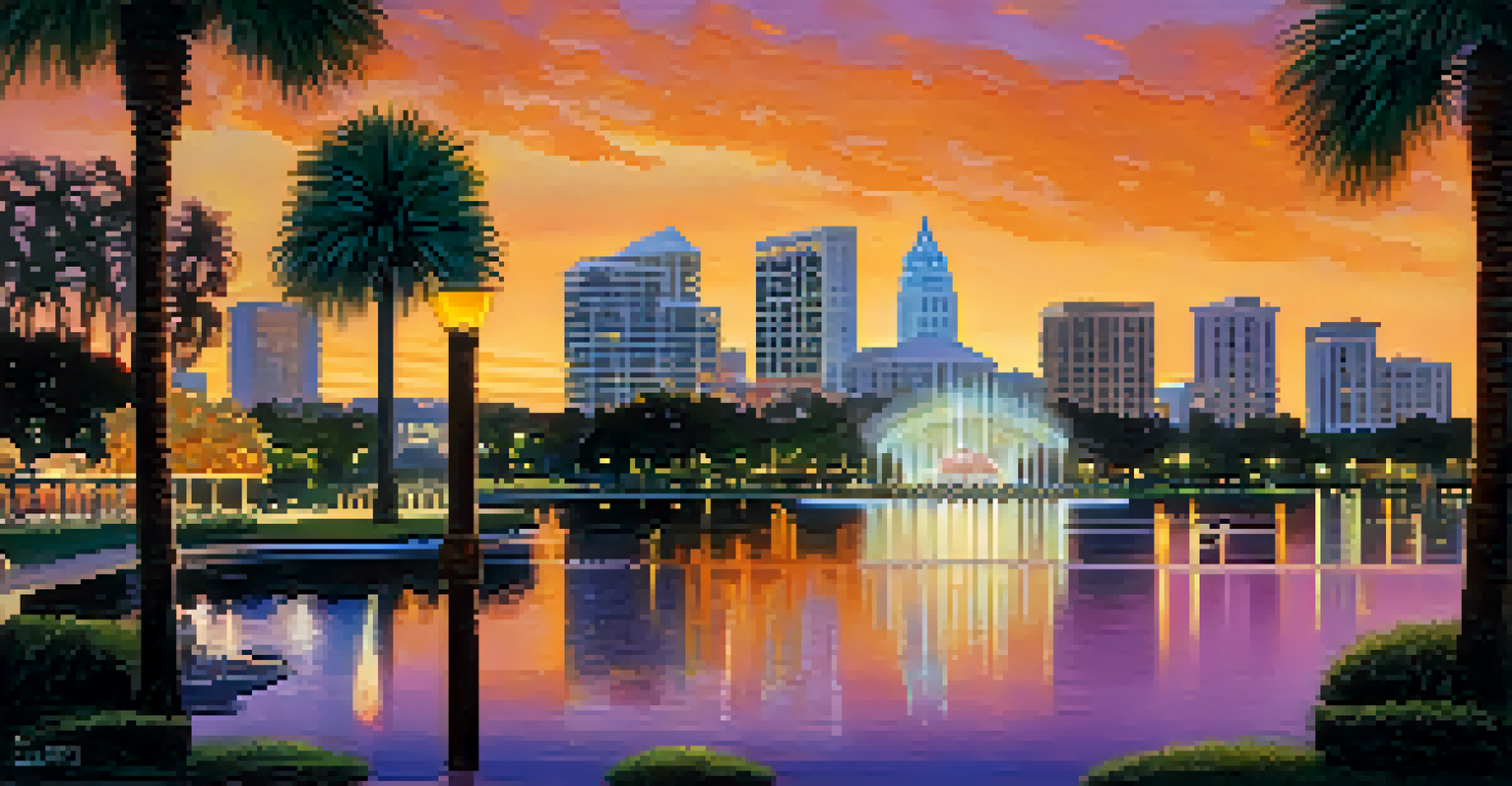The Role of Public Art in Shaping Orlando's Urban Landscape

Understanding Public Art: A Gateway to Community Engagement
Public art serves as a bridge between artists and the community, fostering engagement and interaction. In Orlando, murals, sculptures, and installations invite residents and visitors alike to connect with their surroundings. This connection enhances community pride and encourages conversations about culture and identity.
Public art is a way to bring people together, to create community and to encourage dialogue.
By incorporating local themes or historical references, public art can evoke a sense of belonging among residents. For example, the vibrant murals in the Mills 50 district celebrate the area's diverse heritage and artistic spirit. Such pieces not only beautify the space but also create a narrative that reflects the community's values.
Moreover, public art can spark interest in underappreciated areas, drawing foot traffic and revitalizing neighborhoods. As more people engage with these artistic expressions, it cultivates a sense of ownership and responsibility, prompting locals to care for their environment.
Transforming Spaces: The Aesthetic Impact of Public Art
One of the most visually striking roles of public art is its ability to transform mundane spaces into vibrant, engaging environments. In Orlando, neglected walls and empty lots have been transformed into canvases for creativity, breathing life into the urban landscape. This transformation not only enhances aesthetic appeal but also uplifts community morale.

For instance, the iconic 'Orlando' sign at Lake Eola Park has become a beloved symbol of the city, drawing visitors and locals for photos and strolls. Such landmarks foster a sense of place, making the city feel more welcoming and dynamic. In this way, public art contributes to the city's identity and character.
Public Art Enhances Community Pride
Public art fosters engagement and a sense of belonging among residents, enhancing community pride through local themes and narratives.
Furthermore, the placement of public art can create focal points, encouraging social interactions and gatherings. Park installations, like those found in the Creative Village, invite people to pause, appreciate, and connect with one another, thereby building a sense of community.
Economic Benefits: Public Art as a Driver of Tourism
Public art can significantly boost local economies by attracting tourists and supporting local businesses. In Orlando, art installations and murals have become popular attractions, drawing visitors eager to explore the city's creative side. This influx of tourists contributes to the economic vitality of neighborhoods and the city as a whole.
Art is not what you see, but what you make others see.
Events surrounding public art, such as art walks or festivals, further enhance this economic impact. They create opportunities for local artists to showcase their work while inviting food vendors and small businesses to participate. This collaboration not only celebrates local talent but also fosters a sense of community involvement.
As more people flock to see these artistic wonders, local economies benefit from increased spending in shops, restaurants, and hotels. Public art, therefore, isn't just an aesthetic endeavor; it’s a strategic investment in the economic development of Orlando.
Cultural Reflections: How Public Art Tells Orlando's Story
Public art serves as a powerful medium for storytelling, reflecting the culture and history of Orlando. Through various artistic expressions, communities can share their narratives, values, and struggles with a broader audience. This storytelling aspect fosters a deeper understanding of the city's diverse cultural landscape.
Murals depicting significant historical events or local legends resonate with residents and visitors alike. They provide context and meaning, enriching the experience of exploring the city. For example, the 'Parque de la Paz' mural highlights the contributions of the Hispanic community, celebrating diversity and inclusivity.
Economic Boost from Art Attractions
Public art attracts tourists and supports local businesses, driving economic vitality through art-related events and increased foot traffic.
By embracing various artistic styles and themes, public art can celebrate cultural heritage while also encouraging dialogue about social issues. This dialogue is essential for fostering unity and understanding in an increasingly diverse urban environment.
Encouraging Creativity: Public Art as a Catalyst for Innovation
Public art encourages creativity beyond the initial artistic expressions on display. It inspires local artists, students, and residents to explore their own creativity, fostering a culture of innovation. In Orlando, collaborative projects often emerge, bringing together diverse voices and ideas.
Workshops and community events centered around public art can ignite interest in the arts, particularly among younger generations. Programs that engage schools and local artists create opportunities for hands-on experience, nurturing future talent. This cultivation of creativity can lead to a thriving arts scene.
As artists experiment with new techniques and themes, the urban landscape continuously evolves, reflecting contemporary issues and trends. This ongoing evolution keeps Orlando at the forefront of artistic innovation, making it an exciting place to live and visit.
Public Art and Environmental Awareness in Urban Settings
Public art also plays a crucial role in raising awareness about environmental issues within urban landscapes. Artists often use their platforms to highlight themes of sustainability and conservation, encouraging community engagement with local ecosystems. In Orlando, pieces that incorporate natural elements inspire residents to appreciate and protect their surroundings.
For example, installations that feature recycled materials not only beautify the space but also promote a message of sustainability. These works serve as a reminder of the importance of environmental responsibility, urging individuals to consider their impact on the planet. This fusion of art and advocacy can lead to more environmentally conscious communities.
Public Art Fosters Environmental Awareness
By incorporating sustainability themes, public art raises awareness about environmental issues and encourages community engagement with nature.
Moreover, public art can enhance green spaces, making them more inviting and accessible. As people gather in these areas, they are more likely to engage in outdoor activities, fostering a connection with nature and promoting healthier lifestyles.
Challenges and Opportunities: The Future of Public Art in Orlando
While public art has numerous benefits, it also faces challenges that need to be addressed for its continued success. Issues such as funding, maintenance, and community resistance can hinder the growth of public art initiatives in Orlando. However, these challenges also present opportunities for collaboration and innovation.
Engaging local businesses, government, and community organizations in funding and supporting public art projects can create a sustainable model. By fostering partnerships, Orlando can build a robust public art ecosystem that thrives on collaboration and shared vision. This approach not only enhances the urban landscape but also ensures that art reflects the community's evolving identity.

Looking ahead, the potential for public art in Orlando is vast. With continued support and creative thinking, public art can further transform the city, making it more vibrant, inclusive, and engaging for all residents and visitors.